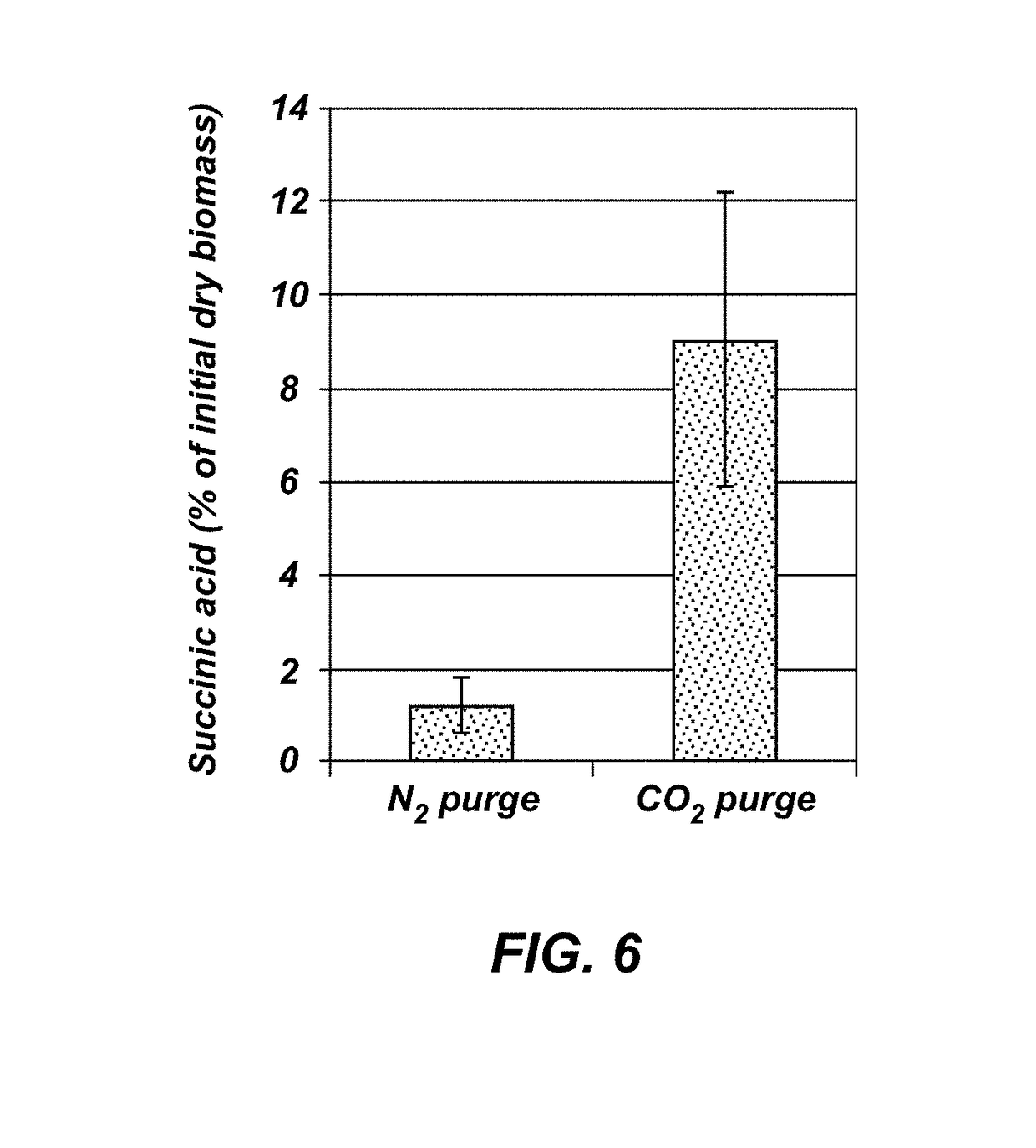Methods of preserving a microalgae biomass and a preserved microalgae biomass
a technology of microalgae and biomass, applied in the field of preservation of microalgae, can solve the problems of delayed processing, fluctuation of growth rate and yield, and easy degradation of algal biomass
- Summary
- Abstract
- Description
- Claims
- Application Information
AI Technical Summary
Benefits of technology
Problems solved by technology
Method used
Image
Examples
example 1
[0037]Scenedesmus Biomass
[0038]Scenedesmus obliquus was cultivated in 1,000 L outdoor raceway ponds at the Regional Algal Feedstock Testbed located at the University of Arizona in Tucson, Ariz. The media contained 0.134 g / L NaNO3; 0.075 g / L MgSO4 (7H2O); 0.013 g / L KH2PO4; 0.175 g / L potash; 0.0054 g / L Fecitraplex; 0.0029 g / L H3BO3; 0.0018 g / L MnCl2 (4H2O); 0.0014 g / L ZnSO4 (7H2O): 0.0004 g / L Na2MoO4 (2H2O); 0.00008 g / L CuSO4 (5H2O); 0.00006 g / L Co(NO3)2 (6H2O); and 0.0001 g / L NiCl2 (6H2O). The pH of the feedstock was maintained at 8.0 with CO2 injection. The microalgae biomass was concentrated by centrifugation (Evodos 10, Raamsdonksveer, The Netherlands) to a paste with a moisture content of 80% wet basis (wb), as determined by drying to a constant weight at 105° C. The algae biomass was transported overnight to the Idaho National Laboratory in a cooler on ice. The microalgae biomass was immediately used for experiments upon arrival.
example 2
[0039]Corn Stover Biomass
[0040]Single pass corn stover was collected in Boone County, Iowa and was ground to pass through a 1-inch sieve using a Vermeer BG480 grinder (Pella, Iowa) and a Bliss Hammermill (Ponca City, Okla.) with no screen. In preparation for storage experiments, the corn stover was further size reduced to pass through a 6-mm screen with a Wiley Mill (model 4, Thomas, Swedesboro, N.J.).
example 3
[0041]Microalgae / Corn Stover Biomass Blend
[0042]Prior to blending, the dried corn stover was rehydrated for 24 hours with sufficient water to result in a 20:80 (dry basis, db) algae to corn stover blend with 60% moisture. At blending, sucrose was added to a concentration of 2% (db) of the total biomass to simulate soluble sugars that would be present in freshly chopped corn stover.
PUM
 Login to View More
Login to View More Abstract
Description
Claims
Application Information
 Login to View More
Login to View More - R&D
- Intellectual Property
- Life Sciences
- Materials
- Tech Scout
- Unparalleled Data Quality
- Higher Quality Content
- 60% Fewer Hallucinations
Browse by: Latest US Patents, China's latest patents, Technical Efficacy Thesaurus, Application Domain, Technology Topic, Popular Technical Reports.
© 2025 PatSnap. All rights reserved.Legal|Privacy policy|Modern Slavery Act Transparency Statement|Sitemap|About US| Contact US: help@patsnap.com



